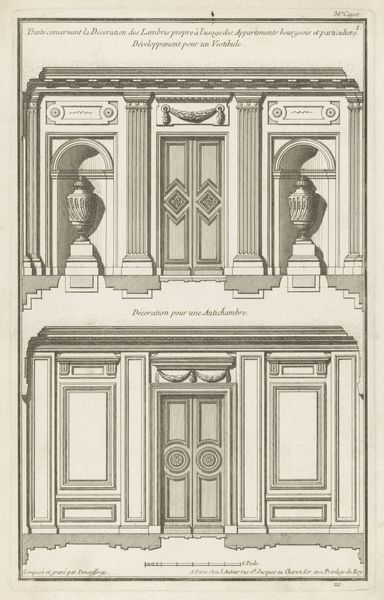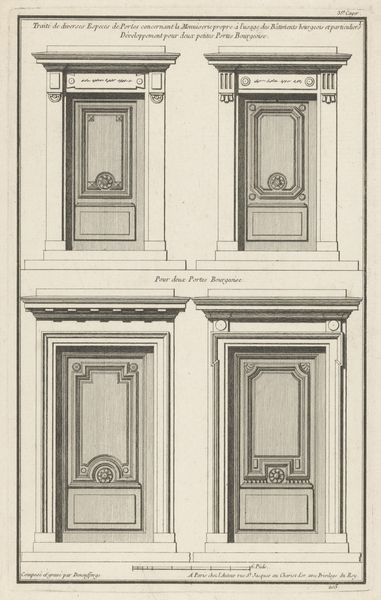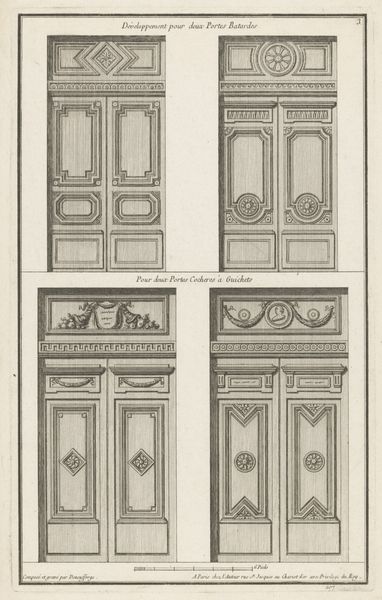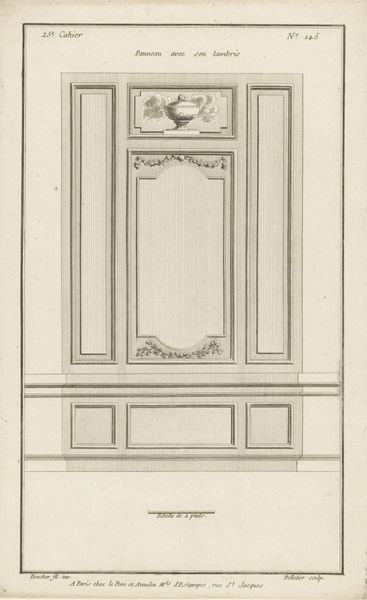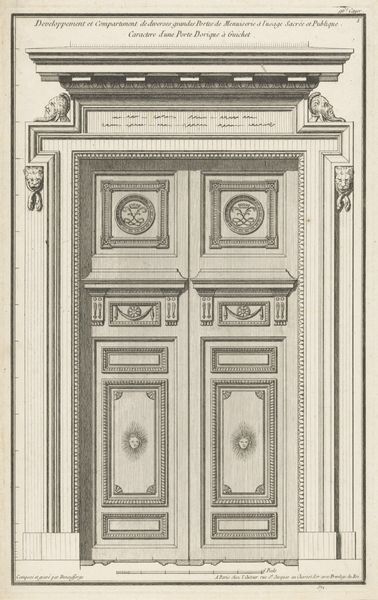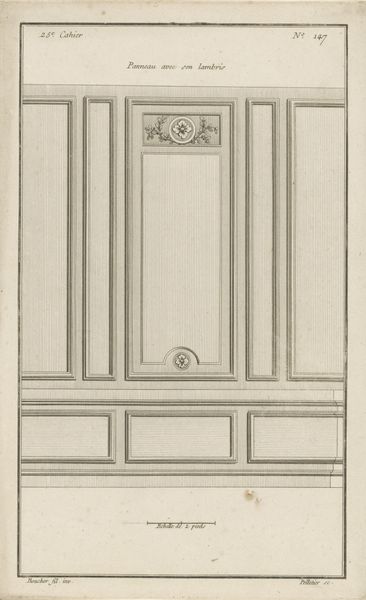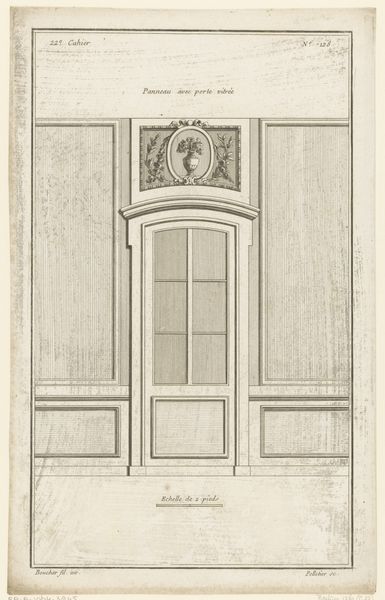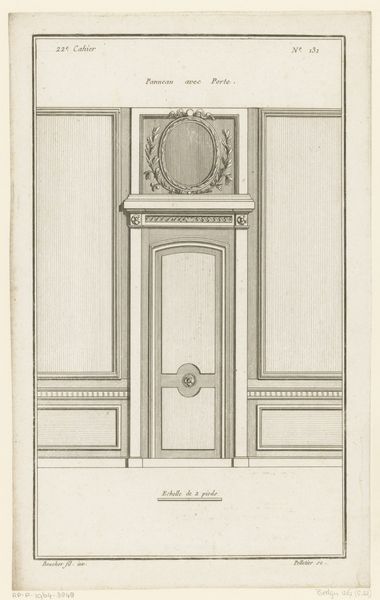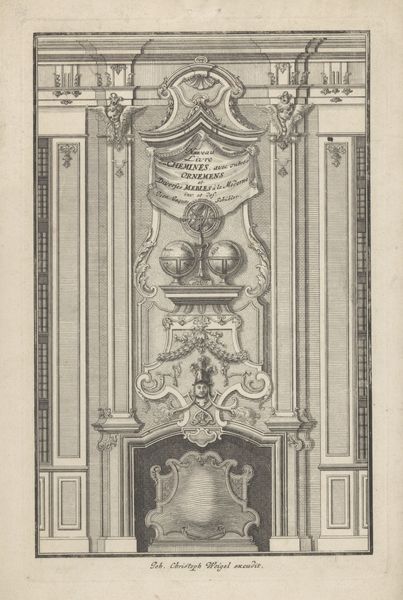
drawing, print, engraving, architecture
#
drawing
#
neoclacissism
# print
#
engraving
#
architecture
Dimensions: height 366 mm, width 229 mm
Copyright: Rijks Museum: Open Domain
Curator: Take a look at this engraving from around 1760, titled "Deuren en wandtapijten," or "Doors and tapestries," by Jean François de Neufforge. It's a study in architectural design. What's your immediate impression? Editor: There's a formality, a precision here that I find quite cool and restrained. It almost feels more like an instruction manual than a finished artwork. The linear details feel really dominant and that lack of any organicism to it evokes control. Curator: Indeed. Neufforge was hugely influential, producing numerous books of architectural designs marketed to builders and patrons. Think about the craft and skill involved in engraving. Every line, every shadow had to be meticulously planned and executed. We're seeing not just design, but the labor of transferring that design into reproducible form. Editor: Right, the layers of labor: the initial design conception, the physical labor of engraving… it really grounds this image. Beyond the materiality of the engraving itself, I'm interested in what this tells us about interior spaces of the time. This design embodies class and social hierarchy—it implies wealth, permanence and control over both the aesthetics and functionality. The use of busts as decoration feels deliberate in implying a family history. Curator: Exactly. The inclusion of tapestries adds another layer. It isn't merely an aesthetic choice but a functional one: offering insulation but also indicating wealth due to their complex methods of production, displaying status. Think about the weaving workshops needed, the dyes sourced and applied... The patterns included, like landscapes or geometric figures, are incredibly diverse. Editor: And they function almost like proto-photographs, capturing scenes and ideas in fabric. What do these planned spaces mean for those who occupied them? How would a family living here engage with these prescribed decorations? Curator: I think that tension—between pre-designed spaces and the lives lived within them— is critical here. Were these plans liberating or constraining for residents? Editor: It's a push and pull of production—someone designed and fabricated all this decor that someone else purchased. Curator: A beautiful tension to end on. Thanks! Editor: Indeed, a dialogue etched in ink! Thank you.
Comments
No comments
Be the first to comment and join the conversation on the ultimate creative platform.
